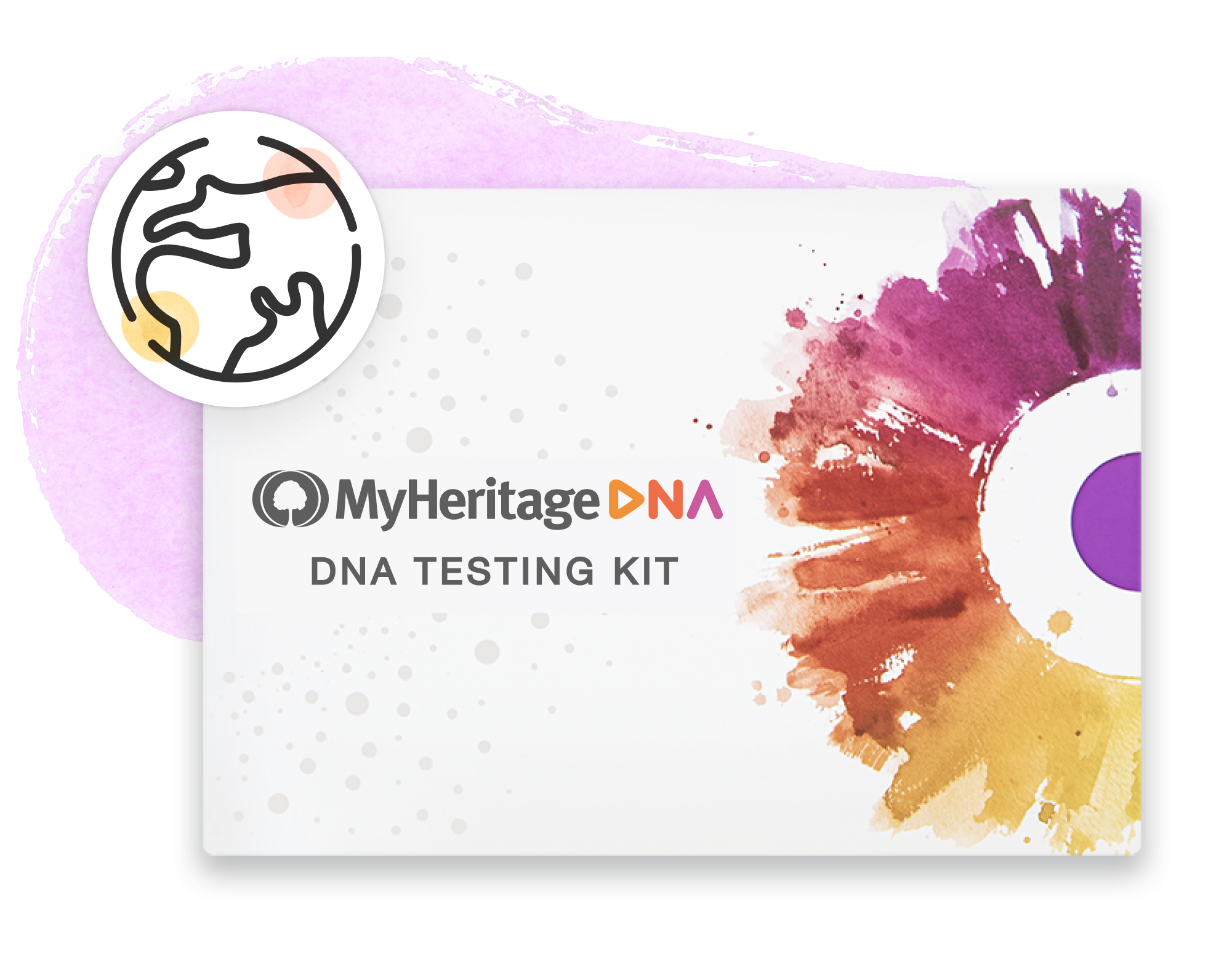
Phenotype refers to the observable characteristics or traits of an organism, which are determined by the interaction between its genetic makeup (genotype) and environmental factors.[1][2] These traits can range from physical features such as height, eye color, and blood type to behavioral patterns, variation in the reactions to certain substances and susceptibility to specific diseases. In the context of genealogy and family history research, understanding an individual's phenotype can provide valuable insights into their genetic heritage.
Research your ancestors on MyHeritage
Variations in phenotypes
The different variations in phenotypes observed in populations is the result of genetic variation and two non-genetic sources of variation, namely, environmentally induced variation (EIV) and stochastic developmental variation (SDV). Genetic variation refers to the differences in DNA sequences among individuals within a population, while EIV and SDV are caused by external factors such as temperature, nutrition, and random events during development.[3]
Genetic and environmental influences on a phenotype
The observable characteristics of an individual are determined by the expression of genes and the interaction with environmental factors. Often, the term phenotype is used to define a difference in DNA sequence among individuals with a variation in a specific trait, like height or hair color, or an allergic reaction to a specific component. However, it's important to keep in mind that that phenotypes are equally and sometimes even more greatly influenced by environmental effects than a genetic sequence, which means that a one-to-one correlation between a genotype and a phenotype does not exist. For example, a person's height is influenced by both their genetic makeup and factors such as nutrition and health during childhood. Similarly, the color of a person's eyes is determined by the combination of alleles (different versions of a gene, which can be dominant or recessive) they inherit from their parents, but can also be influenced by environmental factors such as exposure to sunlight.[4]
Alleles and ethnic phenotypes
Alleles refer to diverse versions of a gene situated at the same position on a chromosome. The phenotype of an organism is determined by a particular combination of alleles, which can be influenced by both genetic factors and environmental conditions. For example, more than twenty different genes help determine hair color, which makes it one of the most physiologically complex phenotypes; in each person, these genes may contain a unique combination of alleles. As a result, even if the genes are expressed as black hair, which is the most common hair color, not all black hair is the same.[5][6] This has also helped advance the development of forensic science.[7]
Applications of phenotypes to genetic genealogy
In the context of genealogy and family history research, understanding an individual's phenotype can provide valuable insights into their ancestry and genetic heritage. Researchers have found that certain alterations in DNA are shared among distinct populations and have been inherited across generations. Through the analysis of these genetic variations, it is possible to trace the ancestral roots of a person and determine the specific "tribes" or populations their predecessors belonged to.[8] These genetic classifications are commonly known as haplogroups.
Understanding an individual's phenotype can provide valuable insights into their ancestry and genetic heritage. Genetic genealogy testing, which consists of analyzing the DNA of an individual to trace their ancestral origins, has become increasingly popular in recent years thanks to the entrance into the market of affordable over-the-counter DNA tests.[9] By examining specific genetic markers, researchers can identify the haplogroups to which an individual belongs and trace their lineage back through generations. One of the most popular reasons people take DNA tests is to find out about their ethnicity and genetic heritage. For example, certain physical traits such as eye color, hair color, and blood type can be linked to specific populations or regions, providing clues about an individual's ancestral origins. However, it is important to note that while genetic genealogy testing can provide valuable insights into an individual's ancestry and genetic heritage, it is not a definitive answer to their family history. Environmental factors, cultural influences, and historical events can all play a role in shaping an individual's phenotype, making it a complex and multifaceted aspect of their identity.[10]
See also
Explore more about Phenotype
- The MyHeritage DNA test
- An Introduction to Investigative Genetic Genealogy, webinar by Ugo Perego, Ph.D., M.Sc. on Legacy Family Tree Webinars
- DNA basics series on the MyHeritage blog
References
- ↑ phenotype / phenotypes. Scitable by Nature Education
- ↑ Definition of phenotype. NCI Dictionary of Genetics Terms
- ↑ Vogt, Günter. Disentangling the environmentally induced and stochastic developmental components of phenotypic variation. ScienceDirect
- ↑ Phenotype. National Human Genome Reference Institute
- ↑ Ethnic Genes, Genetic Genealogy Analysis, And Ethnic Phenotypes. AtlasBioMed
- ↑ Lin, Bochao Danae; Mbarek, Hamdi; Willemsen, Gonneke; Dolan, Conor V.; Fedko, Iryna O.; Abdellaoui, Abdel; de Geus, Eco J.; Boomsma, Dorret I.; Hottenga, Jouke-Jan. Heritability and Genome-Wide Association Studies for Hair Color in a Dutch Twin Family Based Sample. Genes (Basel). September 2015; 6(3): 559–576
- ↑ Painting a mug shot with Genetics: A spotlight on DNA phenotyping. Sechel Educational Publishing
- ↑ Marom, Shani; Friger, Michael; Mishmara, Dan. MtDNA meta-analysis reveals both phenotype specificity and allele heterogeneity: a model for differential association. Sci Rep. 2017; 7: 43449.
- ↑ Finney Rutten, Lila J.; Gollust, Sarah E.; Naveed, Sana; Moser, Richard P. Increasing Public Awareness of Direct-to-Consumer Genetic Tests: Health Care Access, Internet Use, and Population Density Correlates. Journal of Cancer Epidemiology. 2012: 309109.
- ↑ Hopwood, Christopher J.; Donnellan, M. Brent; Blonigen, Daniel M.; Krueger, Robert F.; McGue, Matt; Iacono, William G.; Burt, S. Alexandra. Genetic and environmental influences on personality trait stability and growth during the transition to adulthood: A three wave longitudinal study. Journal of Personality and Social Psychology. March 201; 100(3): 545–556.


